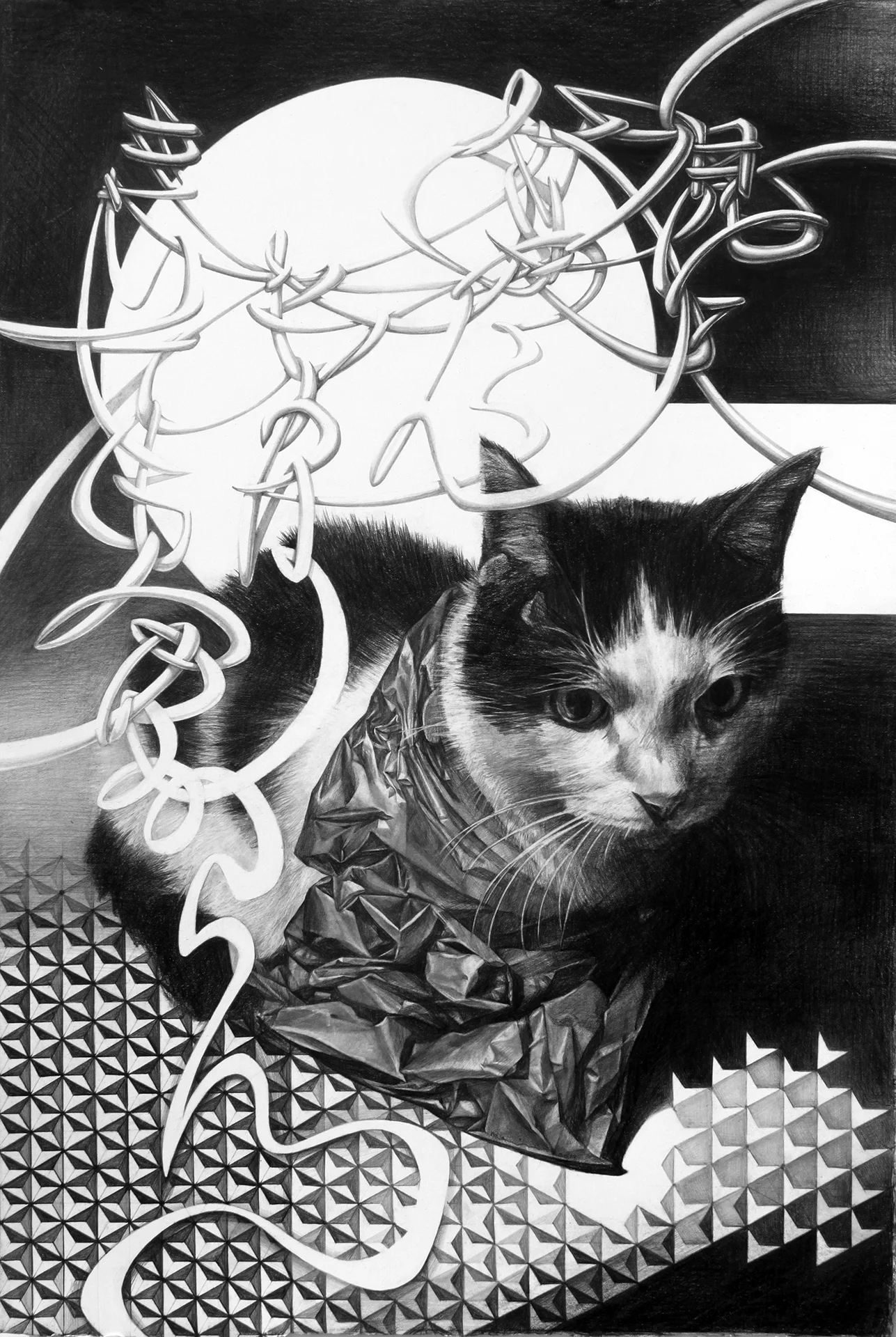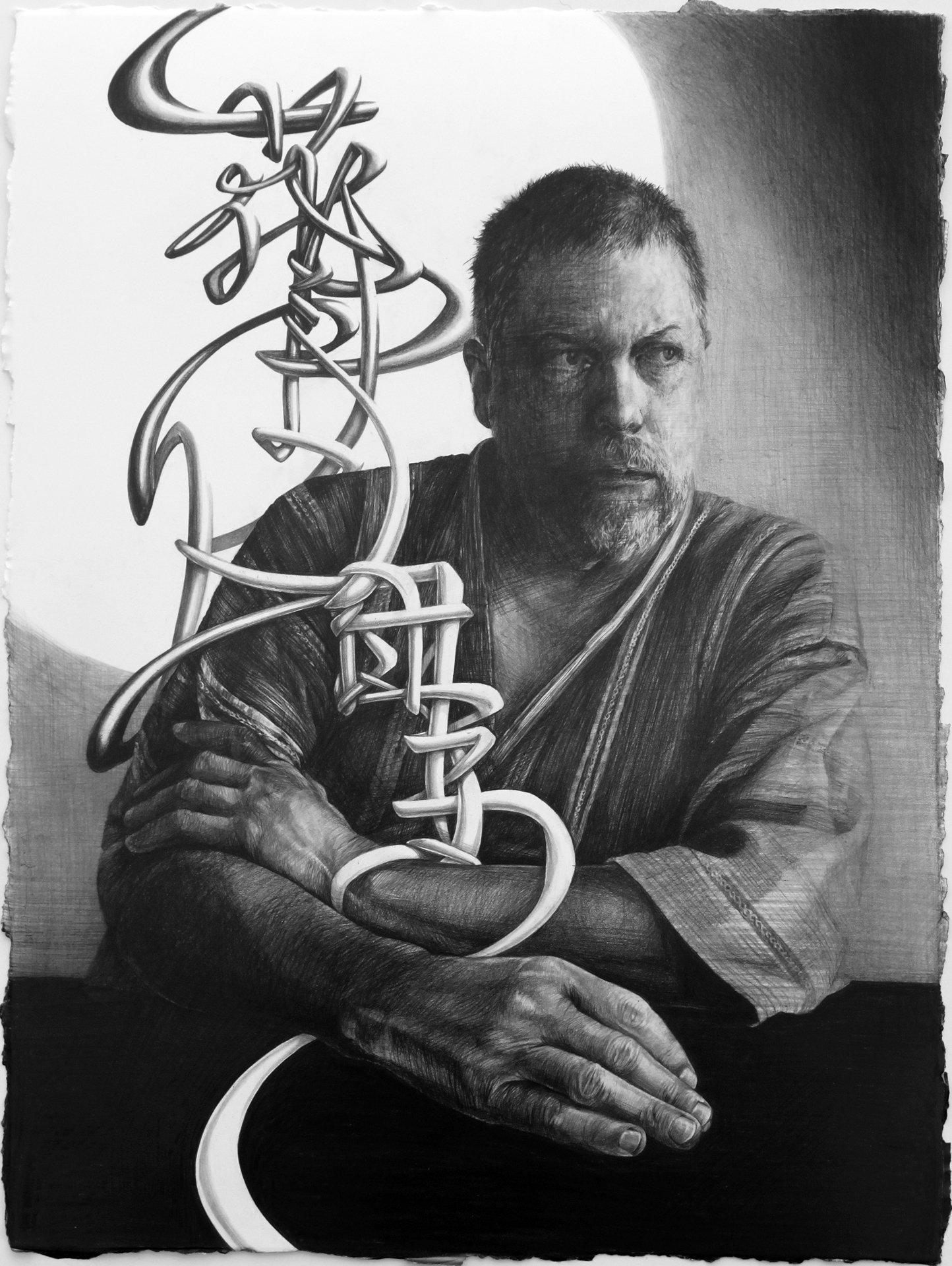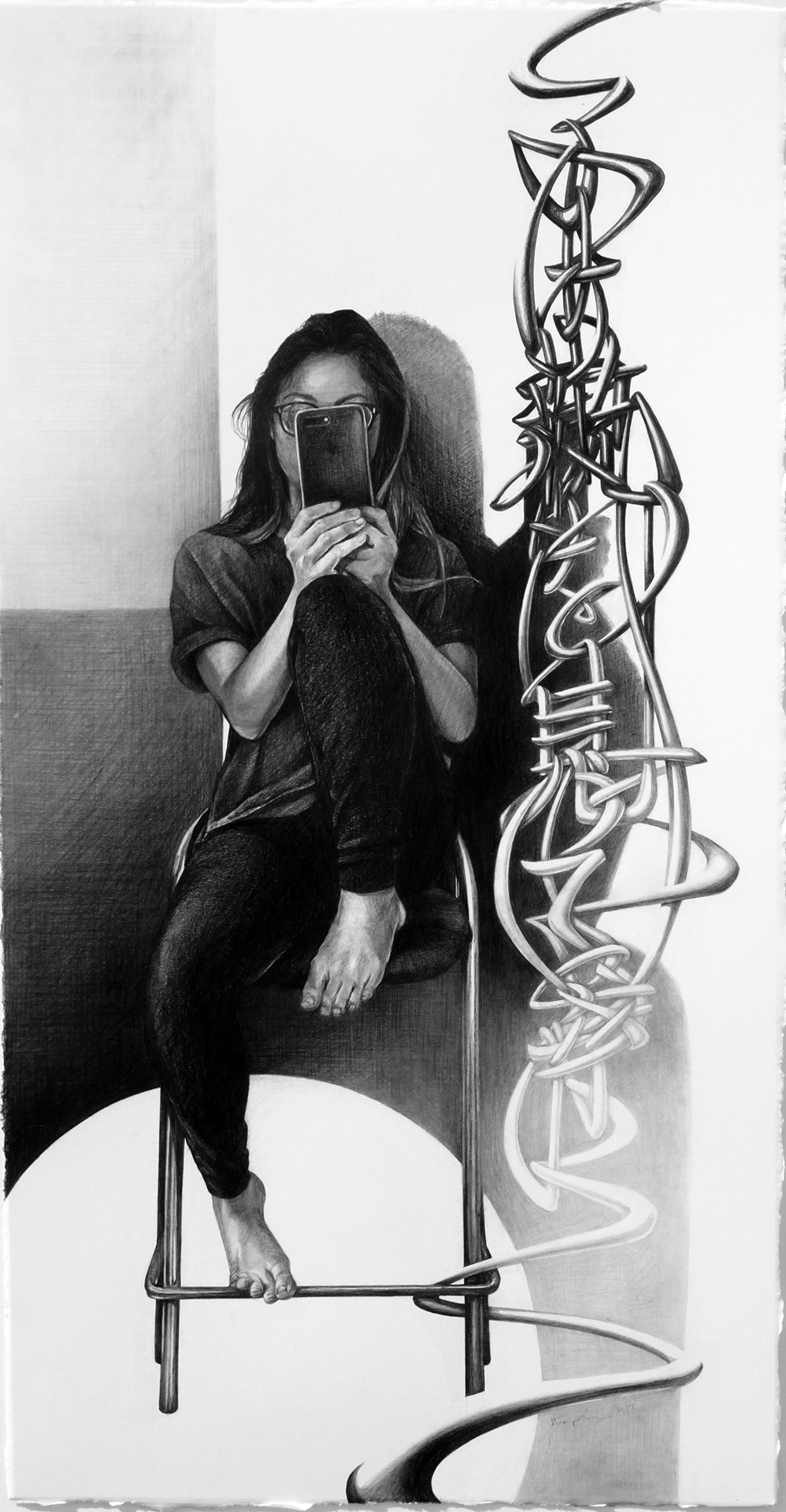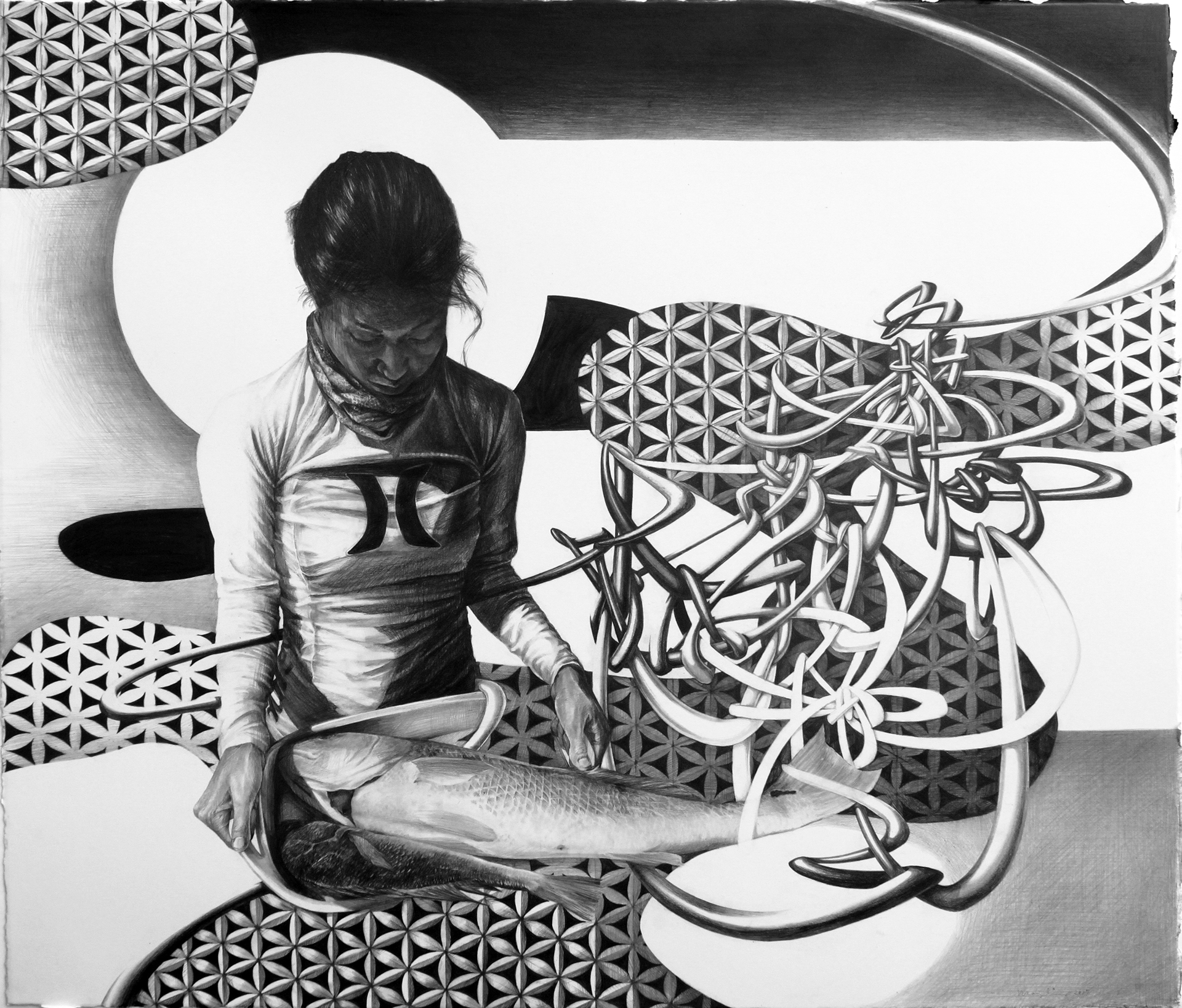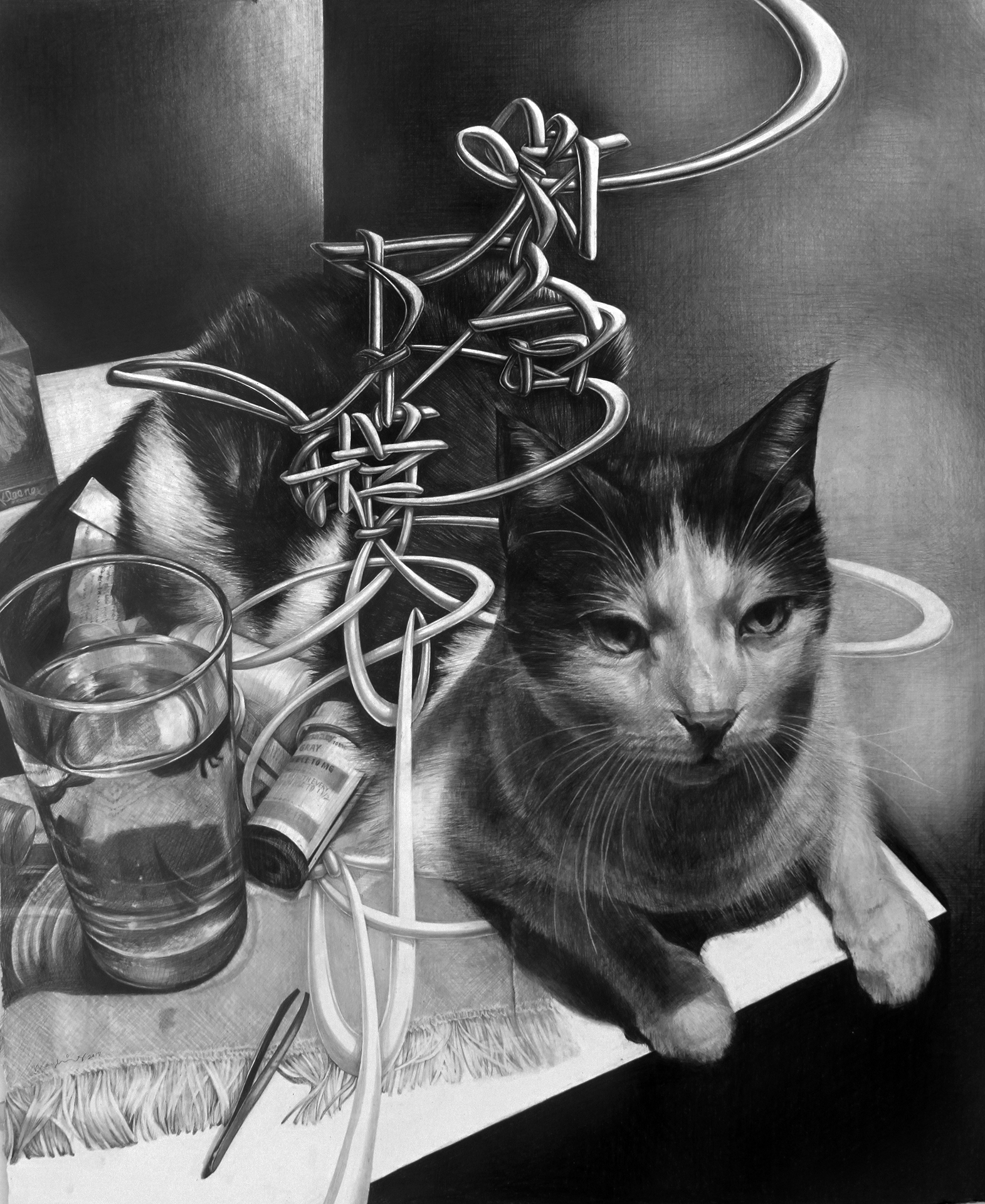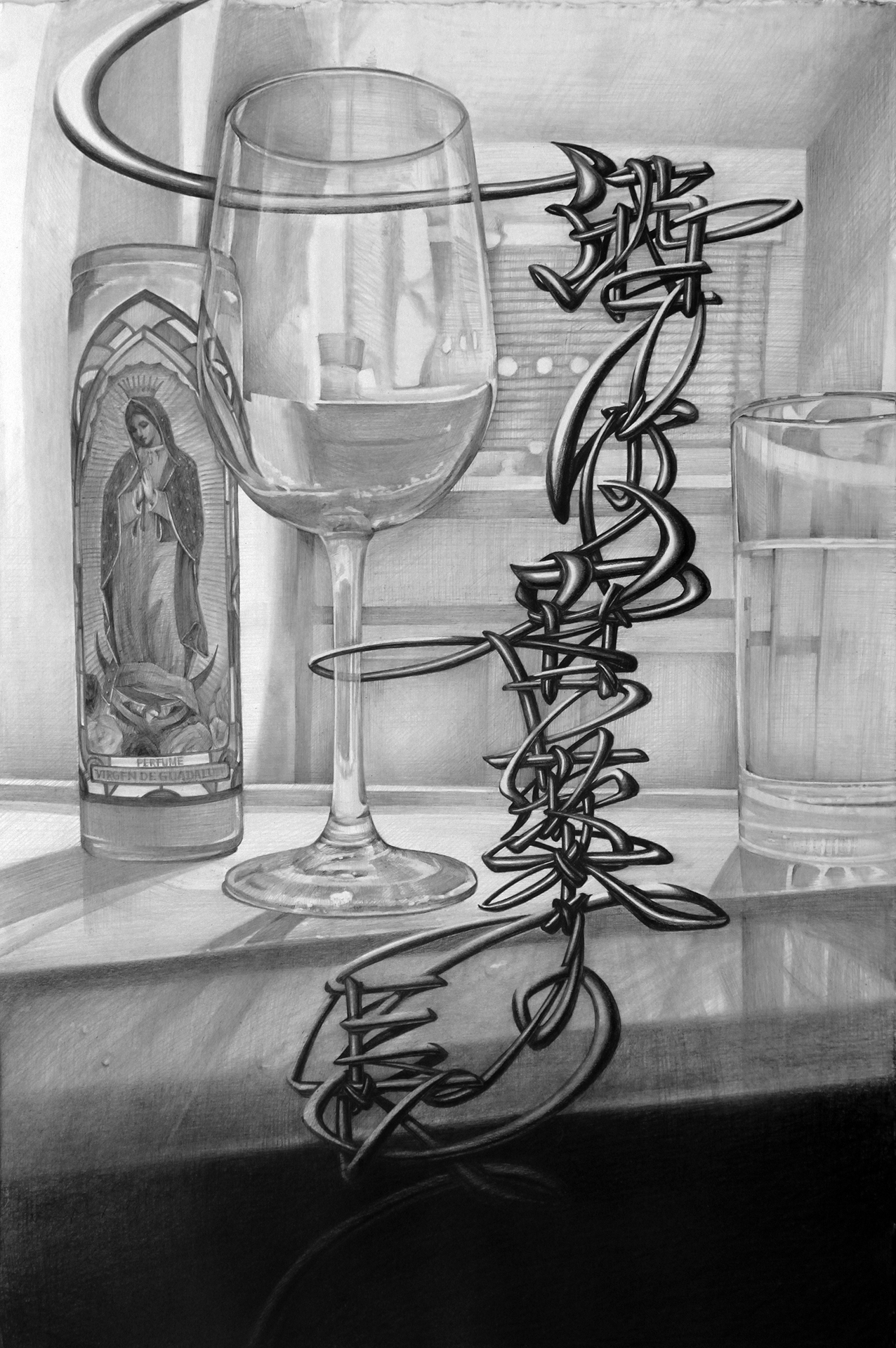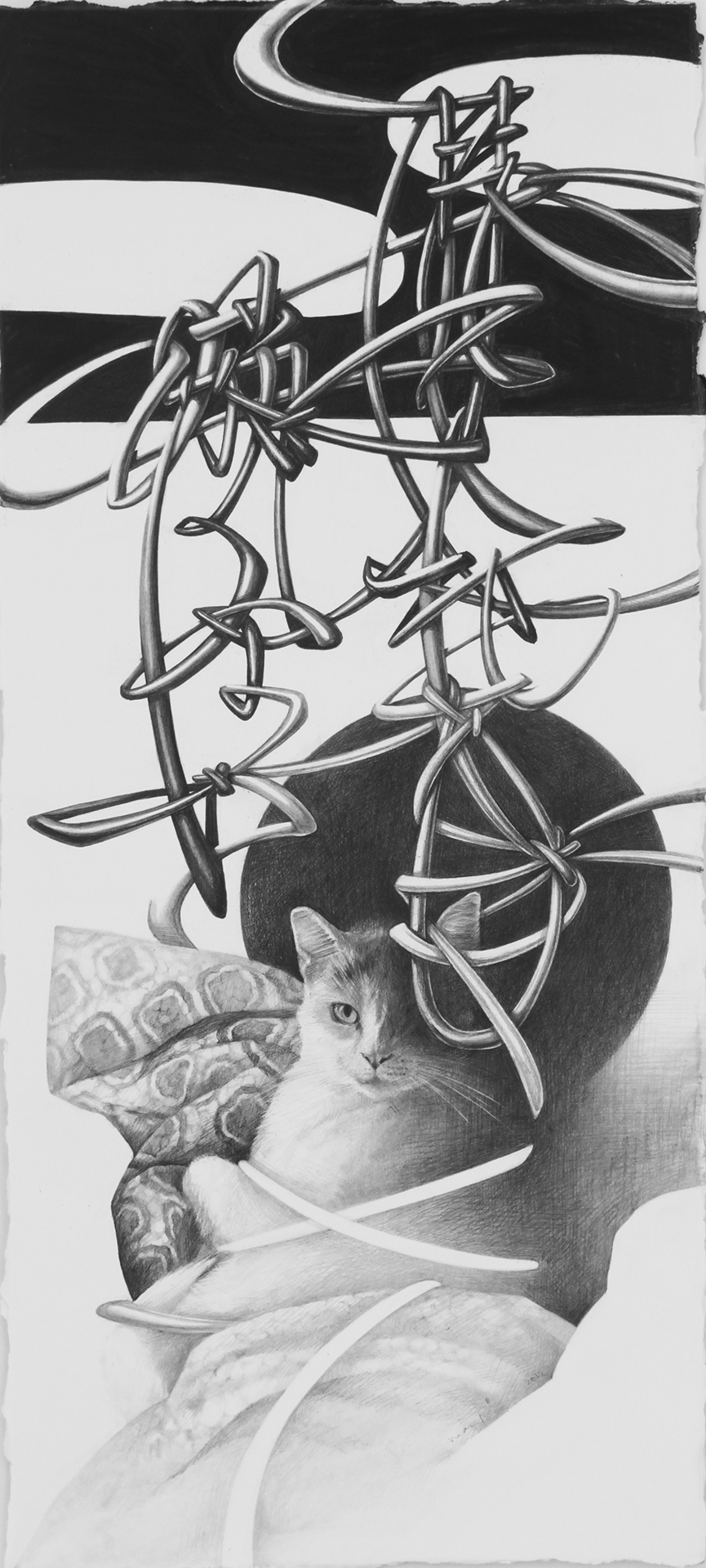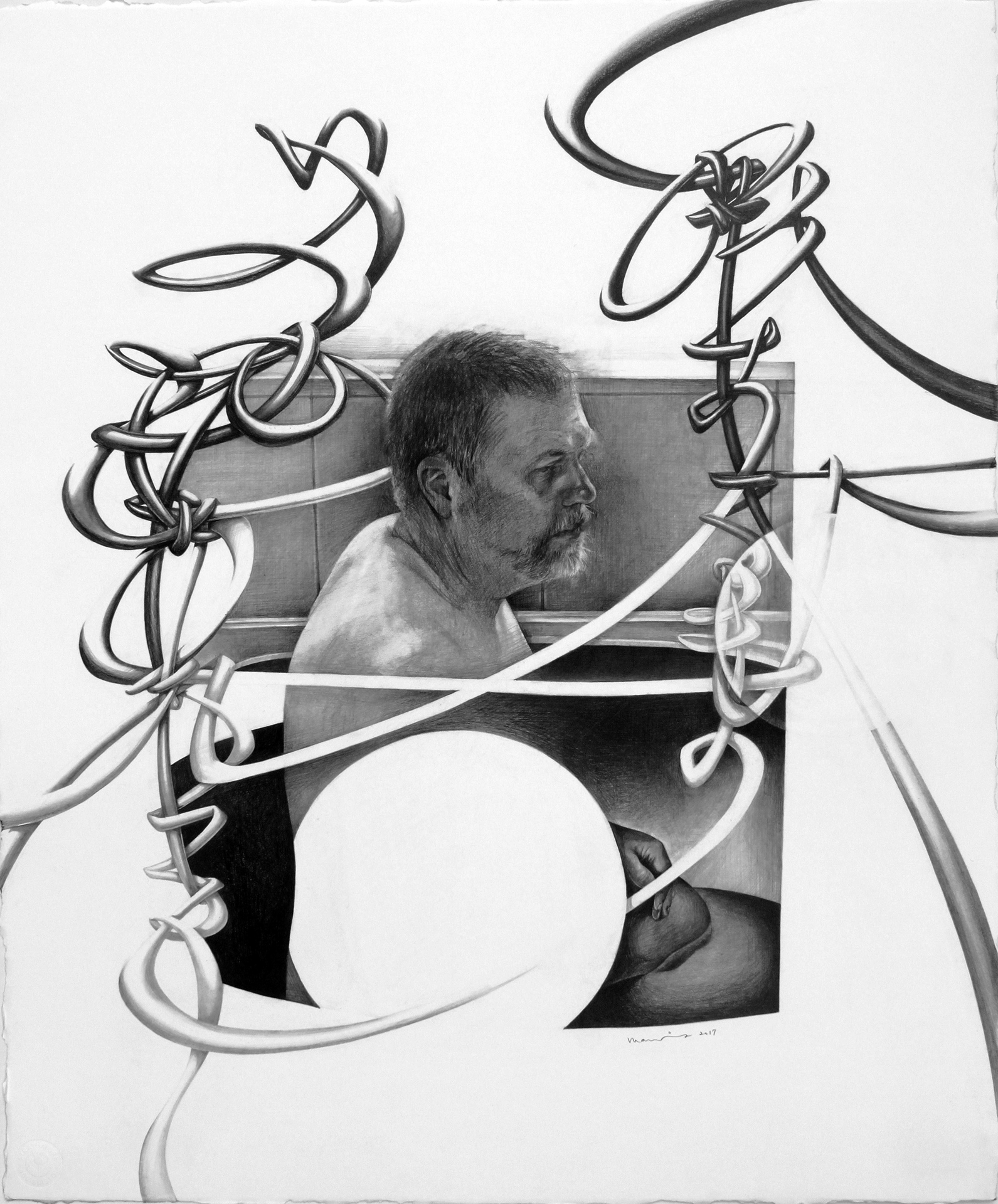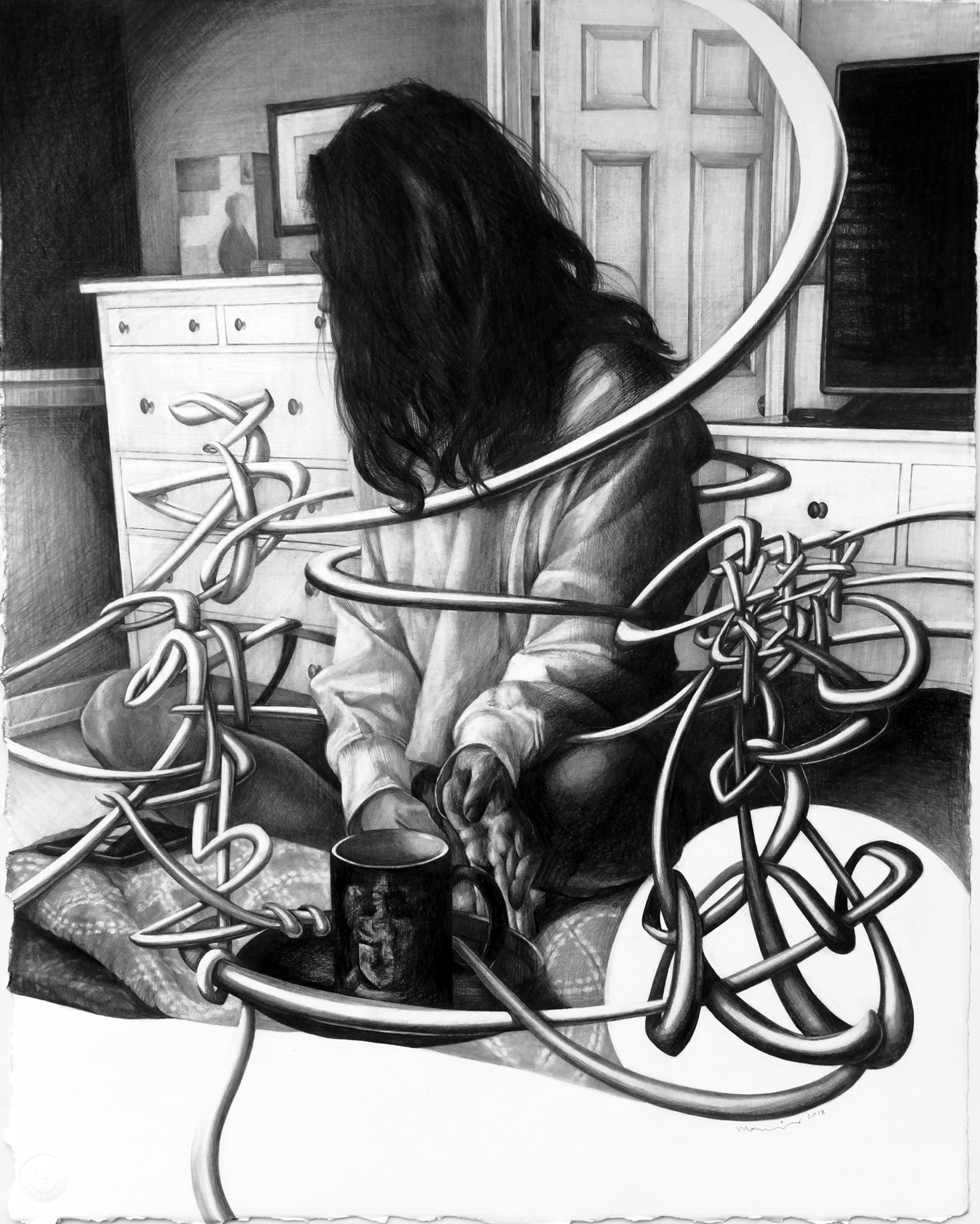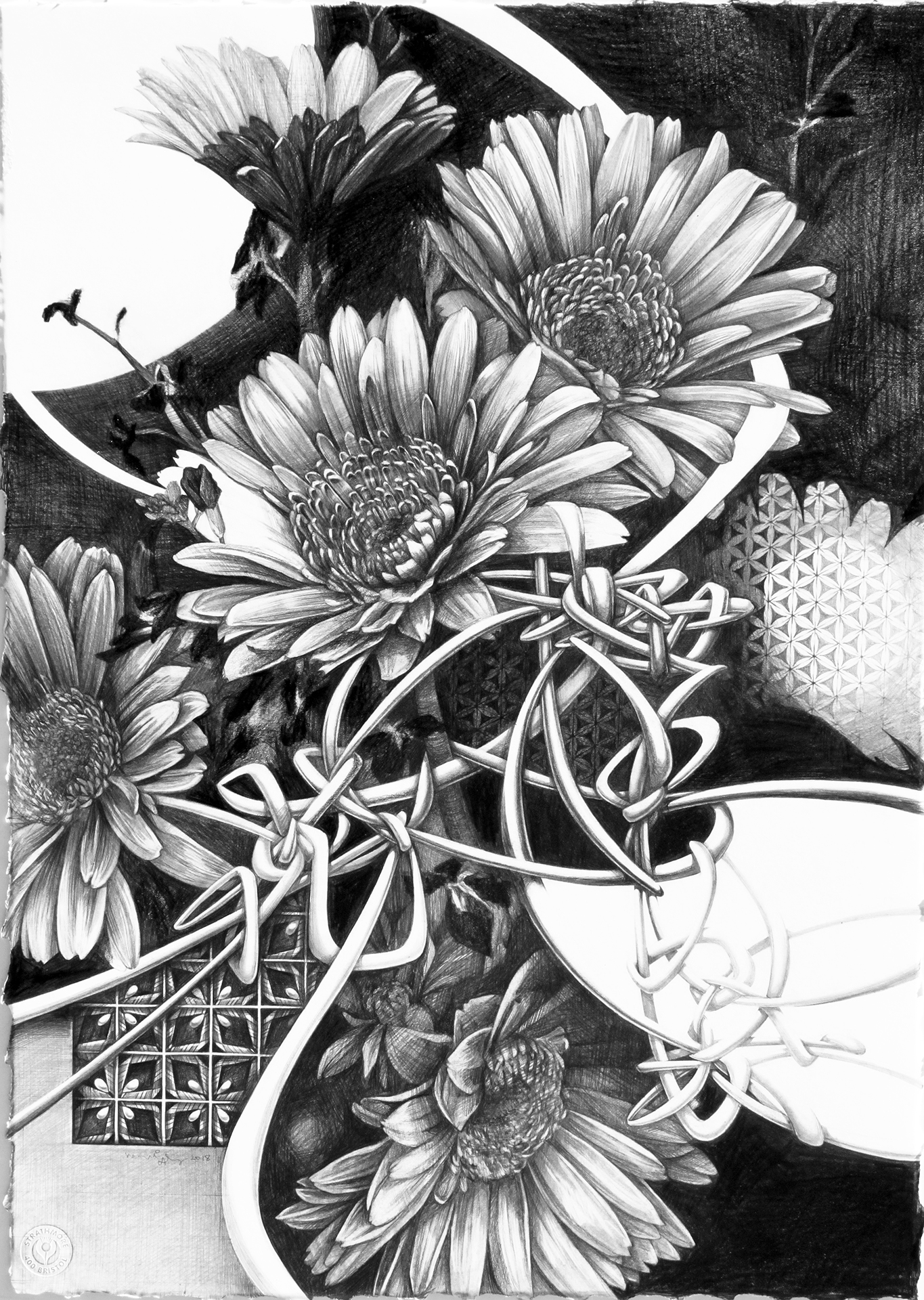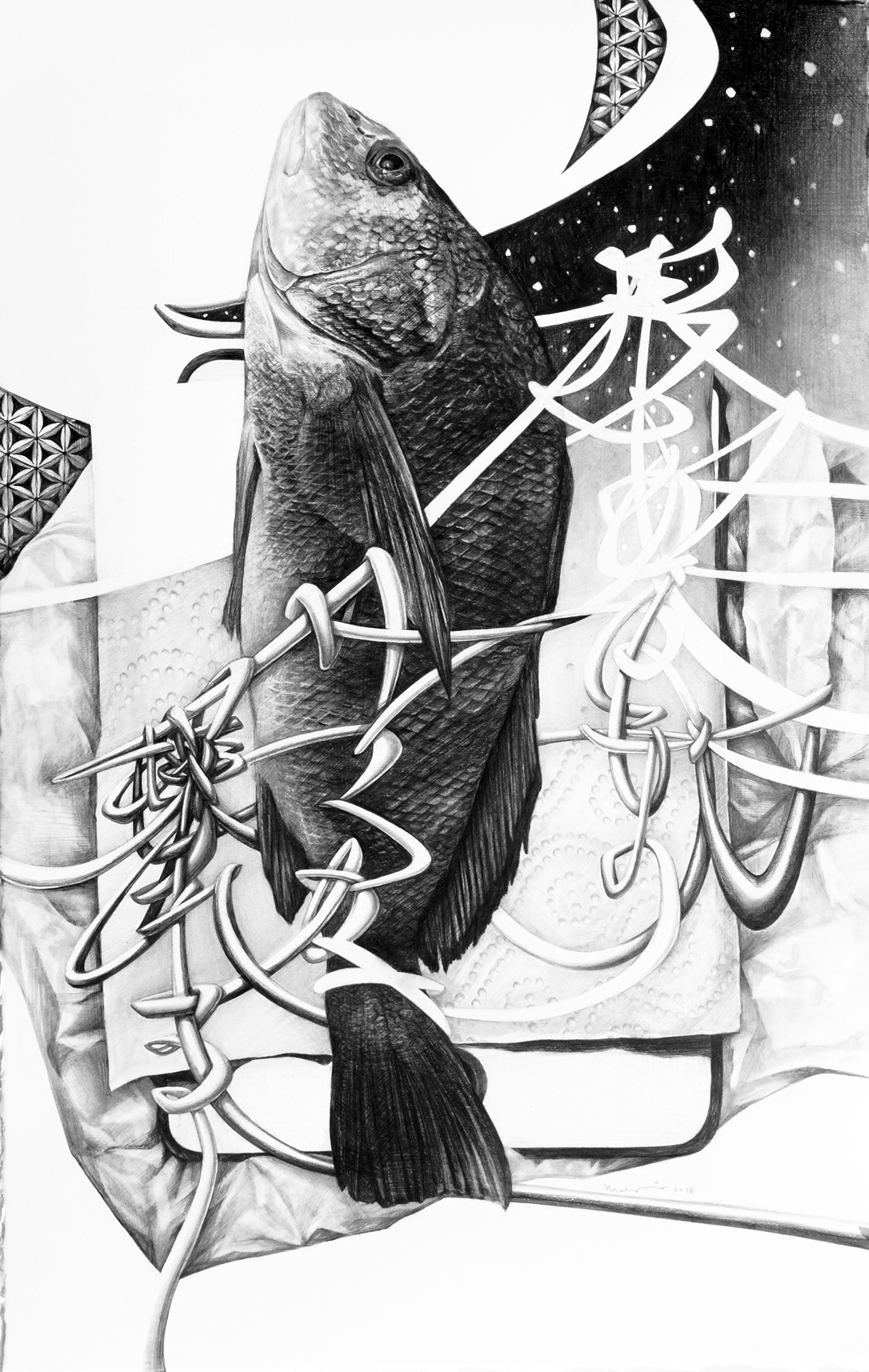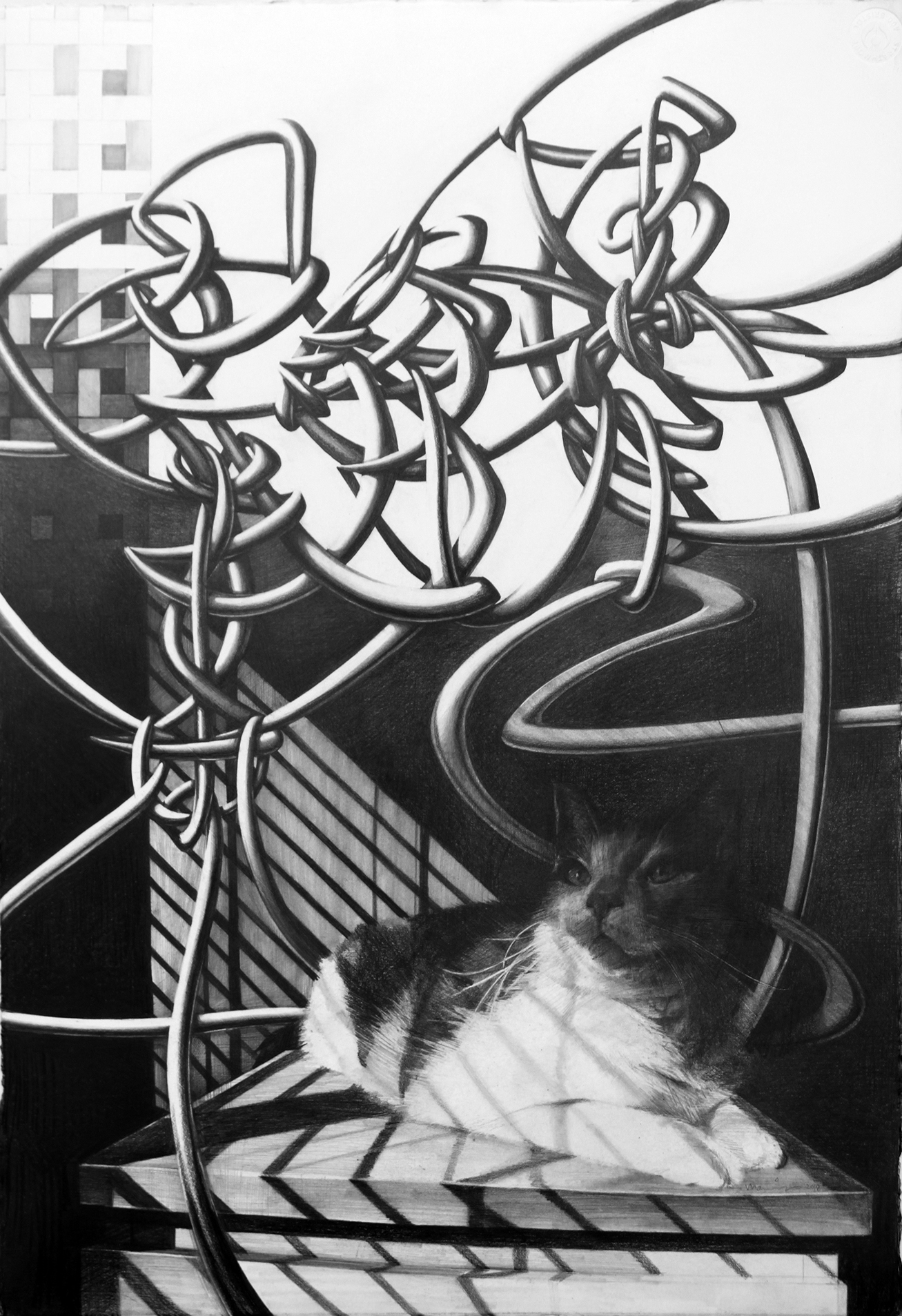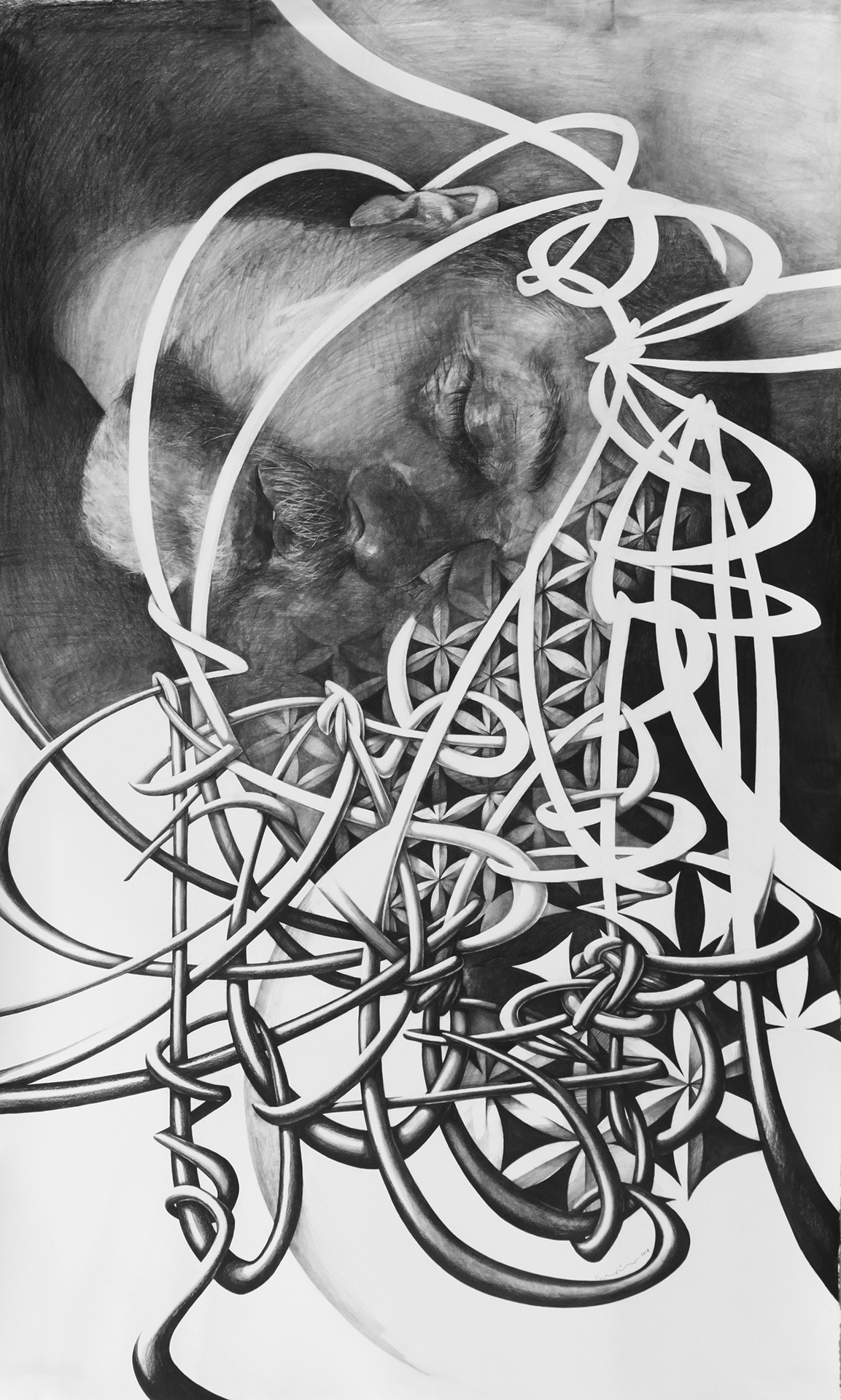Mayuko Ono Gray
My current works are graphite drawings on paper, from smaller scale (8” x 8”) to wall scale (50” x 110”). These are traces of the evolution of my artistic path, from Japanese calligraphy which I studied since I was small in Japan, and the Western tradition of drawings learned in the U.S. after high school.
Growing up in Japan, every Saturday afternoon was spent studying with my Sensei, a calligraphy master who assigned words for me to practice. I would spend hours recopying Master's sample, focused on breathing, the speed and pressure of the brush on the paper, and all the feeling and sensitivity needed to produce a rhythmic and beautiful line.
Gradually I became curious about Western drawing concepts. I moved to the United States. I investigated contemporary artistic practices integrating a variety of cultural influences. My media expanded from fluid ink to malleable graphite and ephemeral charcoal.
My subjects changed from words to still life and figures. My process changed from the wet immediacy of line to illusionistic volumes rendered in chiaroscuro. Instead of going through dozens of rice papers in a session, I now develop a single drawing over time, layering visual ideas on a single sheet of cotton paper. Still, in bridging the cultural vastness of East and West, personal expression remained constant. My current works thus continue the historically rich hybridizations that have always been part of both Japanese and American culture.
My works evolve around my strong interest in the existence of physical body, which I contemplate through art making integrating both Eastern and Western aesthetics and techniques. The works consist of Japanese writings intertwined into one strand, which is a metaphor for life. Working in graphite, I intuitively draw the Japanese calligraphy- stretching, weaving, and changing it- until the composition demands the meticulous solidification of mass, light, and shadow.
I reference Japanese proverbs as well as my own poems, which in their own way resonate to the simplicity and richness of haiku. In each work, hiragana and kanji characters intertwine to create a single line which has only one entrance and one exit on the pictorial plane.
The line usually begins at the top right and ends toward the bottom left of the page, following traditional Asian writing. It is a single line symbolizing a life: one entrance as birth, and one exit as death, representing the two doorways opening and closing our being. Traditional Asian art-forms have often integrated word and image.
Contemplatively woven into my calligraphy, I often include images of persons, animals, and still life drawn from my familiar experience. Whether through the literary artifacts of traditional proverbs, or through personal expressions in poetry and pictures, these word-images are reflections on human nature, place, self, ephemerality, permanence, and universal wisdom. Simply stated, these drawings are expressions of a unique perspective, where East and West combine.
Website: www.mayukoonogray.com
Email: mayukoonogray@gmail.com

